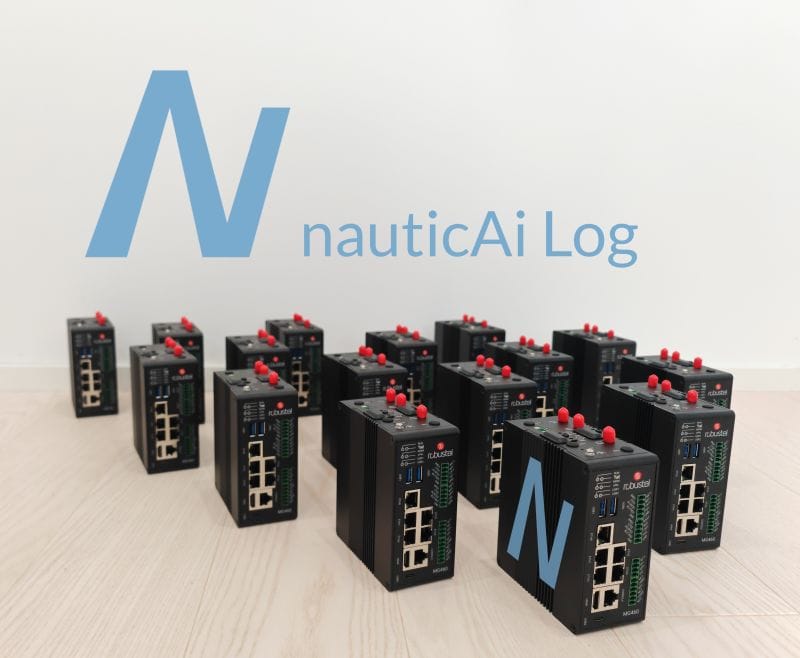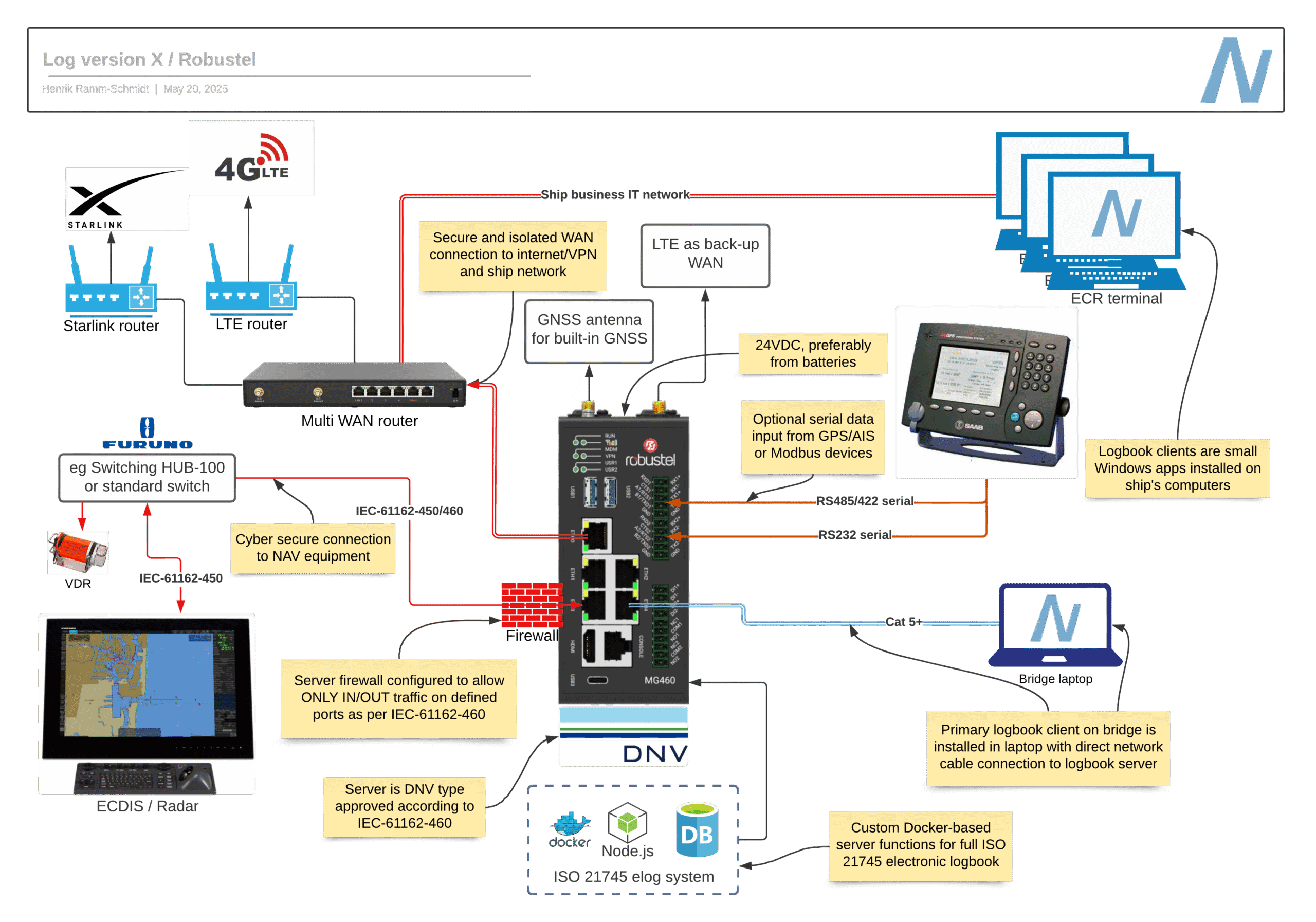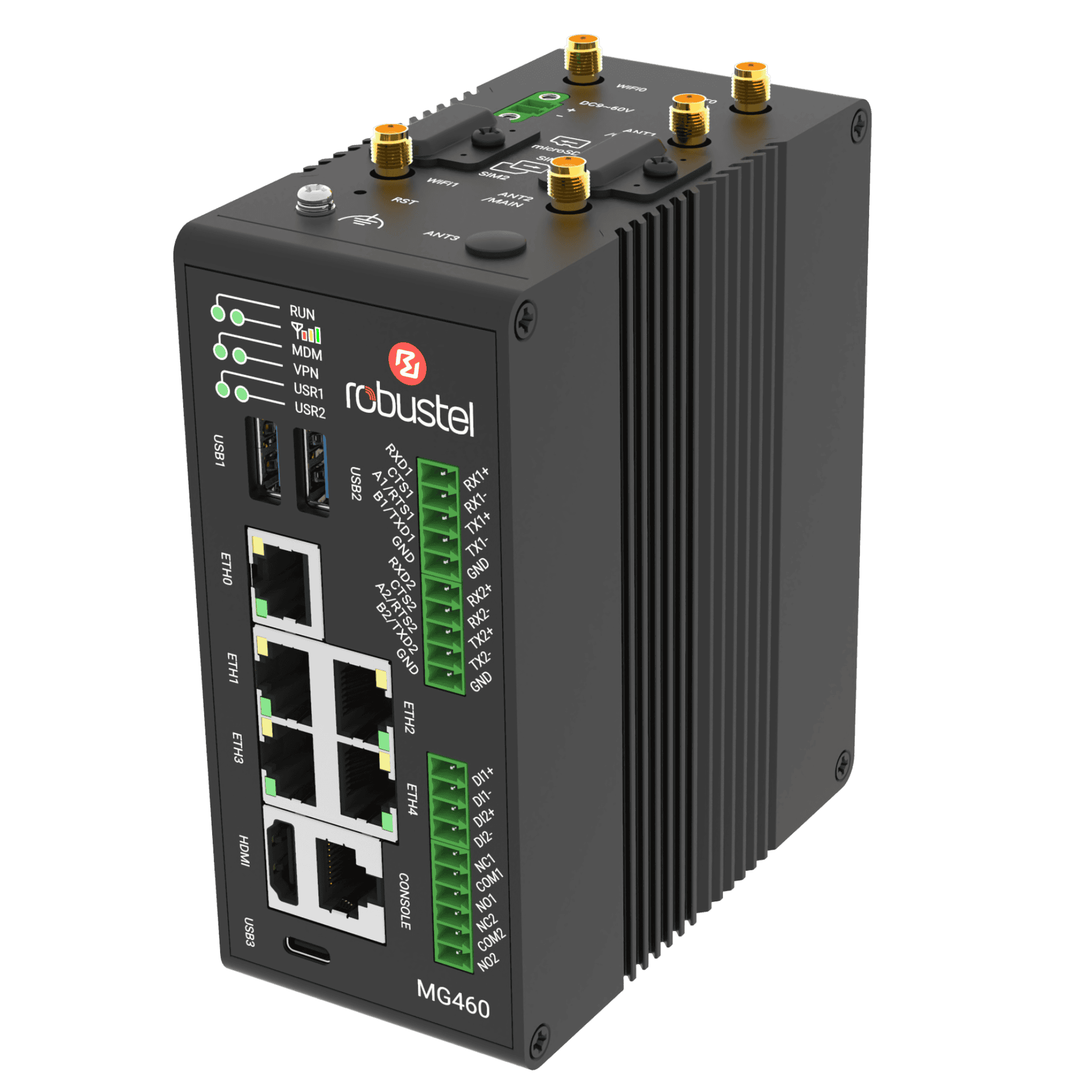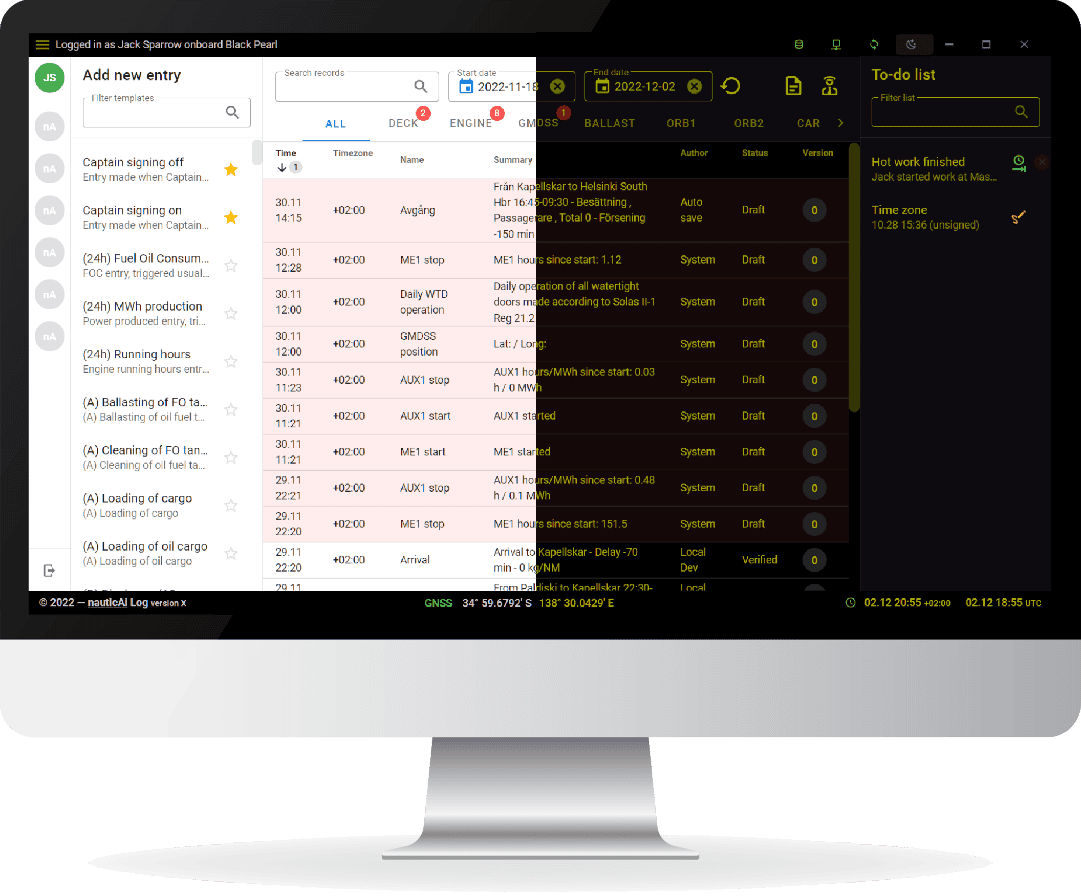Robustel MG460 and nauticAi Electronic Logbooks:
A Cyber-Resilient Foundation for IMO-Compliant Recordkeeping at Sea
Case Study – Fast Facts
Location
Finland
Industry
Maritime
Product(s)
- MG460 Gateway
End Customer
nauticAI – https://nauticai.com/
NauticAI is a Finland-based maritime technology company delivering “Intelligent Maritime Awareness” by fusing IoT sensor, ship-tracking, business and weather data into a real-time operational picture for fleet operators.
Challenges
Electronic logbooks sit at the intersection of bridge OT and ship IT: they must ingest data from VDR/GNSS/AIS, serve crew over onboard networks, and sync to shore via internet/VPN while satisfying IMO/ISO rules and IACS UR E26/E27. That makes the elog a cybersecurity chokepoint: without strict segmentation and encryption across mixed protocols, compliance and safety are at risk.
Results
Pairing NauticAI’s elog with Robustel’s MG460 as the secure edge gateway delivered a hardened, compliant foundation: DNV-approved per IEC 61162-460/450 and IEC 60945, containerized deployment with preloaded configs, multi-interface OT integration, redundant WAN (including LTE backup), and encrypted remote ops via RCMS. The outcome is resilient, low-touch fleet rollouts with reliable recordkeeping and a future-ready architecture for connected vessels.
Secure, IMO-Compliant Electronic Logbooks at the Edge (nauticAI + Robustel MG460)
Electronic logbooks are now mission-critical records—covering MARPOL Oil Record Books, Ballast Water logs, crew watchkeeping and voyage planning—and must align with IMO and ISO frameworks (e.g., MSC.333(90), ISO 21745:2019; MEPC.312(74), MEPC.372(80)) and cyber-resilience mandates such as IACS UR E26/E27. Pairing nauticAI’s compliant e-logbook with Robustel’s DNV-approved MG460 (IEC 61162-450/460; IEC 60945) creates a hardened edge architecture that segments OT/IT networks, encrypts data flows, and enables low-touch, fleet-scale rollouts without compromising legal integrity or safety.
Business Challenges
Business Challenge 1: Compliance without compromise
The e-log is a legal record, so it must satisfy overlapping frameworks—IMO resolutions (e.g., MSC.333(90)), ISO 21745:2019, and environmental rules (MEPC.312/372)—without adding friction to bridge workflows. That means complete, time-synchronised entries; tamper-evident storage and audit trails; role-based access and signature control; and retention policies that hold up to flag-state and class scrutiny.
Business Challenge 2: OT/IT convergence & cyber risk
An e-log sits at a live junction of bridge OT (VDR/GNSS/AIS and navigation systems using IEC 61162-450/460), ship IT (crew workstations), and shore links (satcom, Starlink, cellular, VPN). Without hard network zoning, allow-listed data paths, strong encryption, and disciplined certificate/key management, a single misconfiguration or malware event can become a lateral-movement pathway into safety-critical systems.
Business Challenge 3: Continuous operations in a harsh environment
Maritime connectivity is intermittent by design, antenna blockage, coastal handoffs, congested VSAT, or Starlink outages, so the e-log must keep recording locally and reconcile cleanly when links return (store-and-forward with conflict resolution). Hardware and software must remain deterministic under vibration, EMI, temperature swings (per maritime standards such as IEC 60945), while fleet teams still need remote monitoring, patching, and auditability that don’t rely on specialist IT skills onboard.

Solution Overview

nauticAI selected Robustel MG460 as the secure edge platform for its IMO-compliant e-logbook. The MG460 is not just a cellular router it’s a DNV-approved, Docker-ready cybersecurity gateway certified for maritime environments (IEC 61162-450/460; IEC 60945). It lets nauticAI’s e-log server run directly at the network edge while enforcing strict OT/IT segmentation and end-to-end encryption, with RCMS enabling fleet-wide remote operations.
Why the MG460 was the right fit
- Plug-and-play deployment: Ship-specific configurations are preloaded before shipment so crews can install without specialist IT skills reducing downtime, costs, and emissions.
- Containerized e-log server: Built-in Docker support allows nauticAI’s e-log application and database to run securely onboard—no external PC required.
- Multi-protocol, multi-interface integration: RS232/RS422/RS485 and IEC 61162-450 ports connect to GNSS, AIS, and VDRs; built-in GNSS provides redundant position; relay/digital inputs enable trigger-based logging.
- Redundant WAN access: An integrated LTE modem provides backup internet if Starlink or ship broadband fails.
- Secure remote operations: Encrypted VPN tunnels plus RCMS for fleet management vital for monitoring, patching, and compliance auditing.
Key Outcomes
“Elogs live at the intersection of navigation, compliance, and connectivity. We needed a platform that could handle this complexity — securely and simply.” – Capt. Henrik Ramm-Schmidt, CEO & Founder, nauticAI.
Key Outcomes
- Compliance-aligned foundation: The stack supports IMO/ISO 21745 requirements on a DNV-approved IEC 61162-450/460 gateway that also meets IEC 60945—ensuring the e-log is treated like other safety-critical systems.
- Hardened OT/IT boundaries: The MG460 acts as a secure DMZ per IEC 61162-460: segmented ports, policy-bound traffic, and encryption mitigate lateral movement risks on mixed-protocol bridges.
- Low-touch, faster rollouts: Preloaded configs, containerized deployment, and RCMS reduce onboard intervention and support consistent fleet-wide standards.
- Future-ready edge: The container-ready design and resilient WAN options create headroom for iterative features and evolving cyber rules (including UR E26/E27).
“The MG460 is designed for secure edge applications where failure is not an option — and that includes the ship’s legal logbook. We’re proud to partner with nauticAi to deliver this level of resilience to the maritime world.” – Desmond Kuang, General Manager of IoT BU, Robustel.
Featured Products
Robustel MG460 Gateway

nauticAI Log

